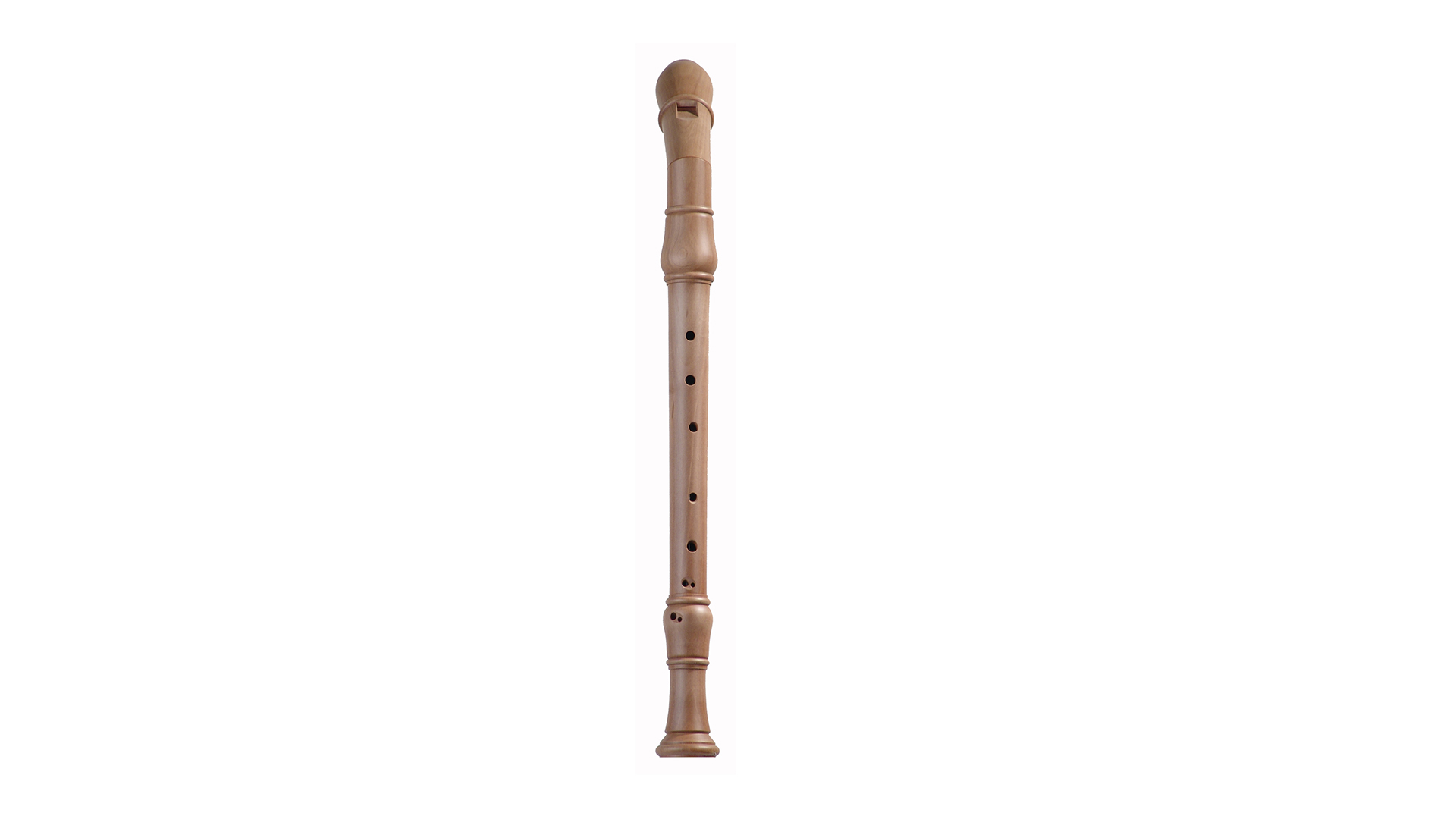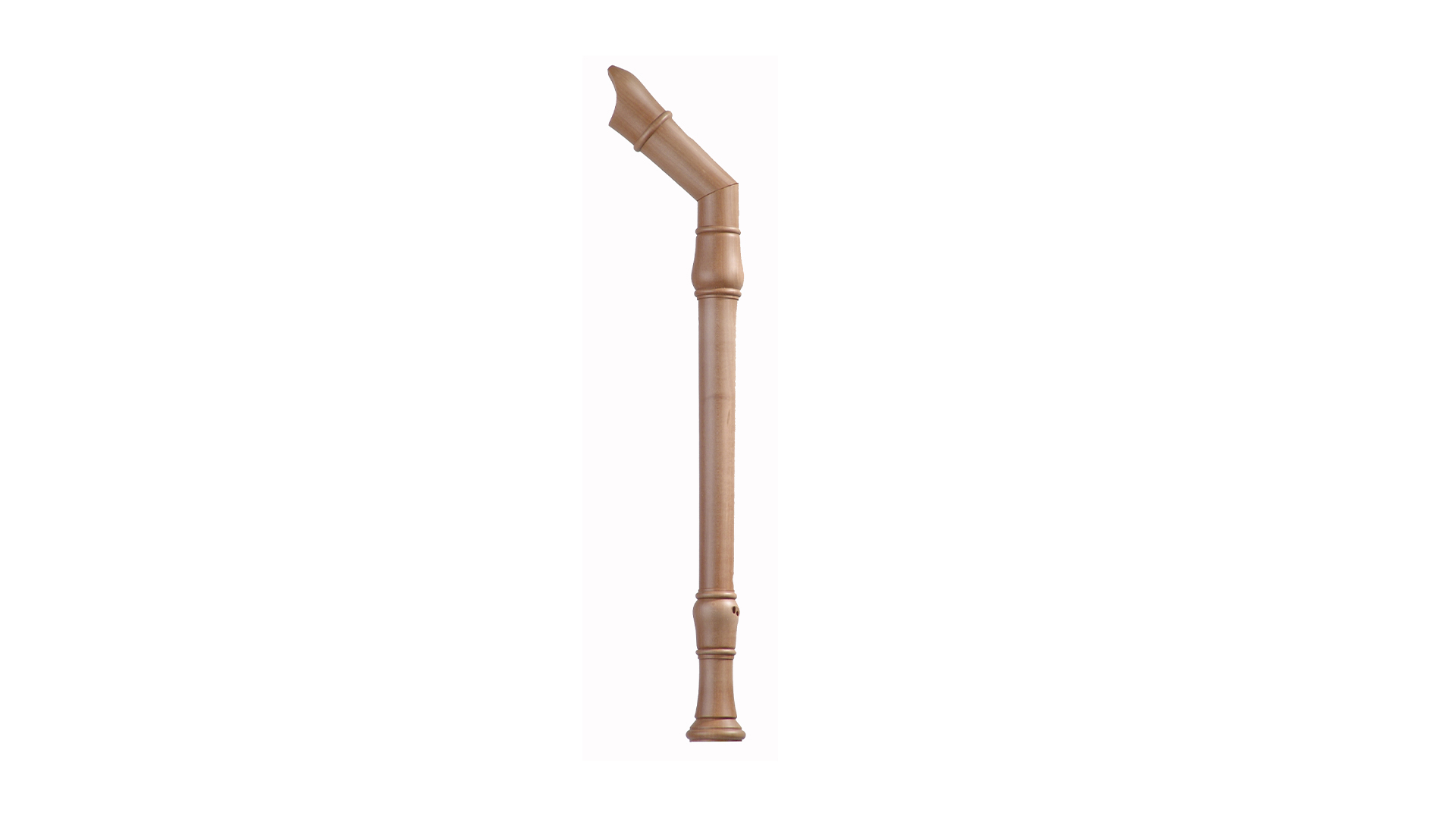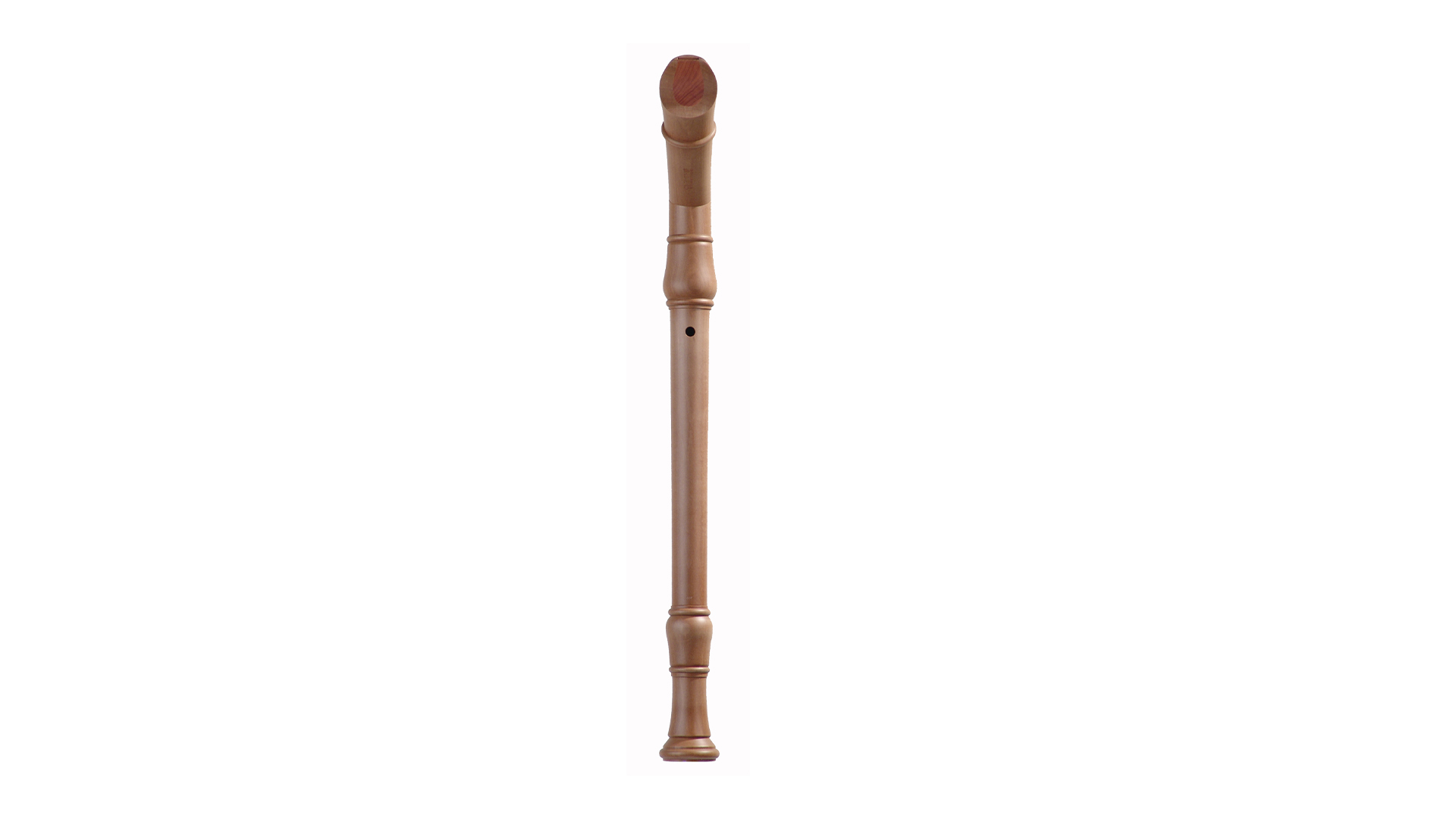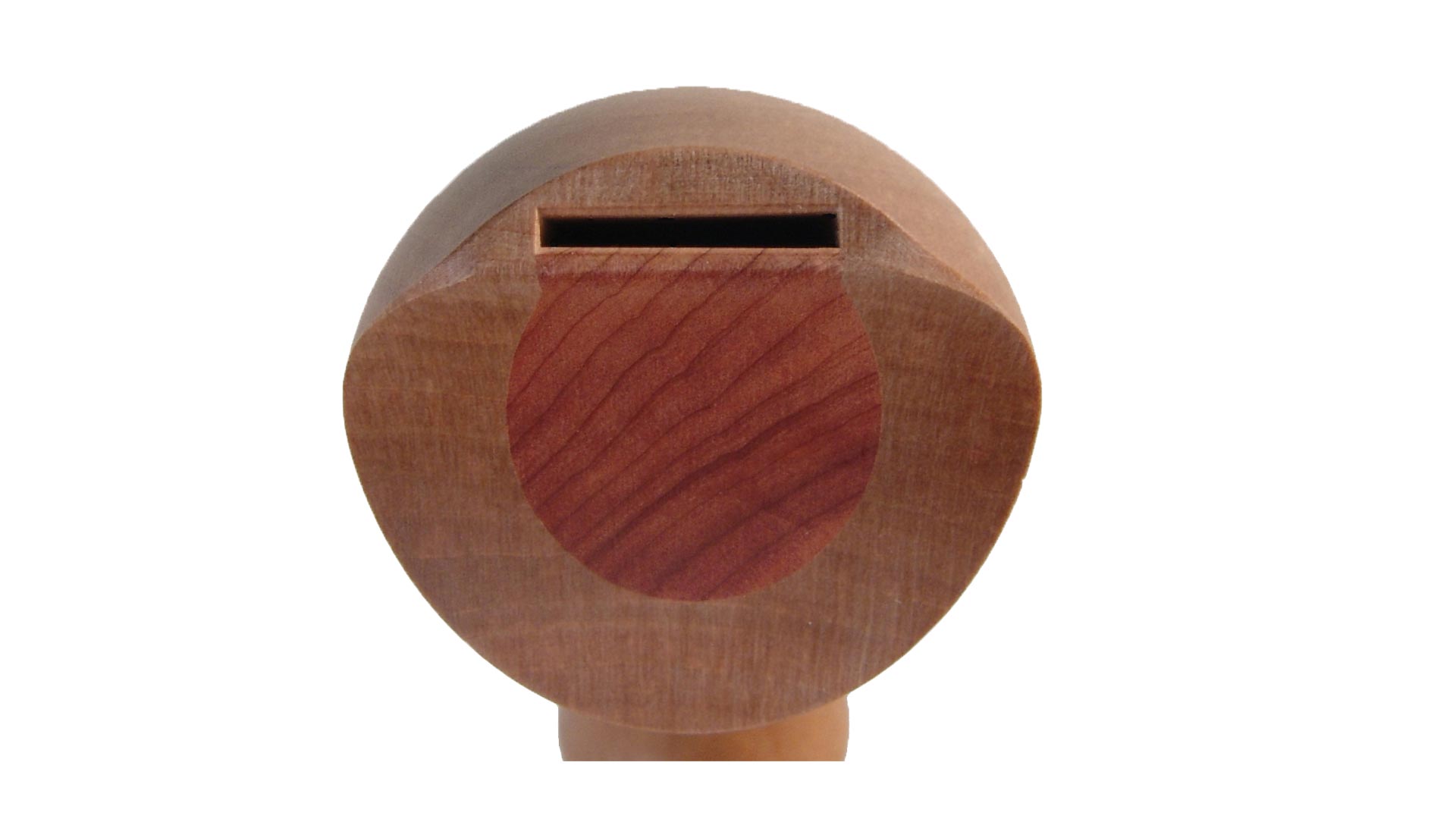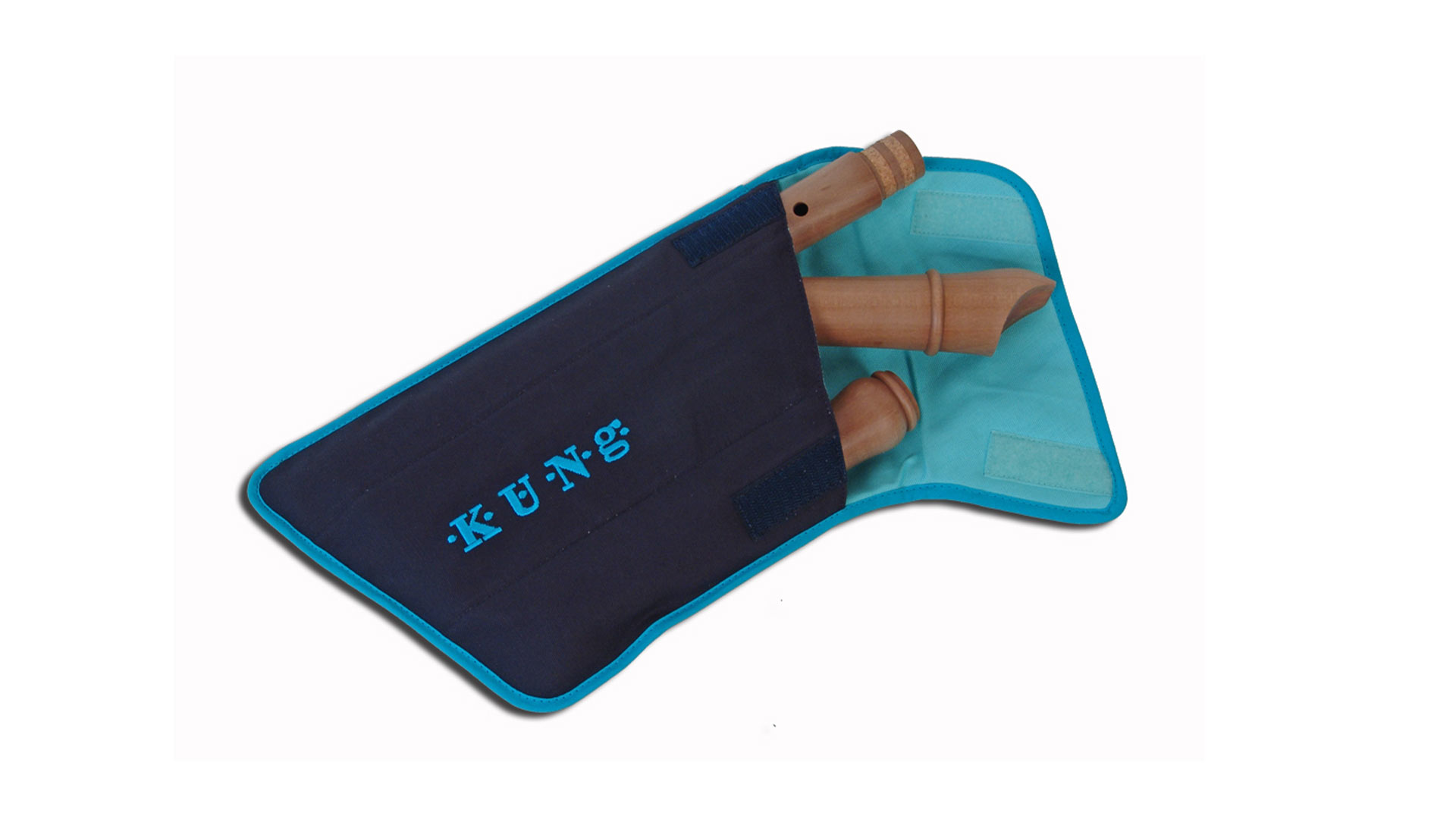Baroque Doublehole, Item: 1581-KUE Natural, 442 Hz
This Tenor with the article number: 1581-KUE constructed by Küng is a companion, the in lessons, or performing unfailingly will give fun.
This characteristic is due to the careful combination of the outstanding instrument model in fine tuning with the sound of the material Pearwood.
The bore
The geometry of the inner bore of the instrument is light cylindroconical. This kind of bore course gives the instrument this special sound.In principle, recorders with wider bore sound warmer, fuller, more fundamental and thus more suitable for ensembles than instruments with narrower scale.
For what styles can this instrument best be used for?
Pearwood is greatly suitable for woodwinds used for: focus on choral playing, recorder ensembles and orchestras, other styles are possible.To whom is this recorder addressed?
For the above facts it follows that recorders made of Pearwood are especially for ambitious amateurs and advanced players recommendable. A second to be heeded law is that a more instrument makes the interaction usually beautiful than a cheap low-cost bargain.The windway of a recorder
The windway is the area in the headpiece of the recorder where the blowing air of the musician is formed into a thin sheet of air. This air leaf is of one of the most important elements of the recorders sound. At the labium, the air stream is very quickly alternately directed inwards and outwards. This swinging flow stimulates the air in the body of the instrument. This is the origin of the recorder tone. This is the reason why the labium must not be damaged in any case. The same rule applies to the windway. Otherwise suffer the range of musical expressiveness of the recorder.
The windway of the instrument 1581-KUE of Küng has this windway shape: Straight, conical.Conical windways accelerate breathing air more than cylindrical shaped windways.
Never violate windway and labium! Their meaning for the sound is complex in their design. Even minor damages here often lead to a total loss!
Fingerings
The recorder Küng 1581-KUE is offered in the version: Baroque Doublehole .
Construction
The number of components of an instrument shapes strongly the way with which the recorder in use on the one hand is uncomplicated to handle in terms of easy assembling and on the other hand for the safe transport.
This is a point that should not be underestimated, especially when transporting larger (and sometimes multiple) instruments.
{Experienced ensemble players can tell you a thing or two about this. Or ask leaders of recorder ensembles.
Leaders of recorder orchestras know how useful good and compact recorder cases are.
Packaging and accessories
The instrument is supplied as standard with: BagThe following accessories included: Wiper rod, fingering chart, care instructions
Hints on the way to new recorders
Ask acquaintances!The search for your new recorder should in no case be influenced by "generally accepted" rules.
Get your own realizations after trying a recorder. Don't let "expert"-opinions.
Do not let others stop you from trying a unkown brand.
Your musical perception is as unique as you are.
Therefore, only you can decide which instrument concept will personally you.
Our recommendation is therefore: Play also unknown concepts!
After that you will be surprised and can make a confident decision.
Information about instruments with keys
Not always can tone holes be drilled in places in the that are easy and convenient to grasp with the fingers. Especially with bass instruments sit for acoustic necessities tone holes adequate to reach. On these instruments, by the instrument maker keys are added, which make gripping clearly easier, or possible in the first place.This allows it to be {pleasant|light|ergonomic|conspicuous|above average| good grip even by players with smaller hands.
The instrument 1581-KUE has the following flaps:
| Accessories: | Wiper rod, fingering chart, care instructions |
|---|---|
| Bore shape: | light cylindroconical |
| Construction: | 3-part (head, middle, foot) |
| Fingering: | Baroque Doublehole |
| Material: | Pearwood |
| Material: Botanical name: | Pyrus communis |
| Material: Country of origin: | Austria |
| Packing: | Bag |
| Surface treatment: | Natural |
| Target group: | Ambitious amateurs and advanced players |
| Weight with case: | 0.624 kg |
| Windway: | Straight, conical |
| Size: | Tenor |
| Blowing type: | Bend head |
| Tuning pitch: | 442 Hz |
| Group: | Recorder |
| Material structure: | Pearwood: Very load-bearing with a fine-pored structure. |
| Musical use: | focus on choral playing, recorder ensembles and orchestras, other styles are possible |
| Sound characteristics: | Pearwood: Soft, choral sound. Suitable for playing in a group |
Login



